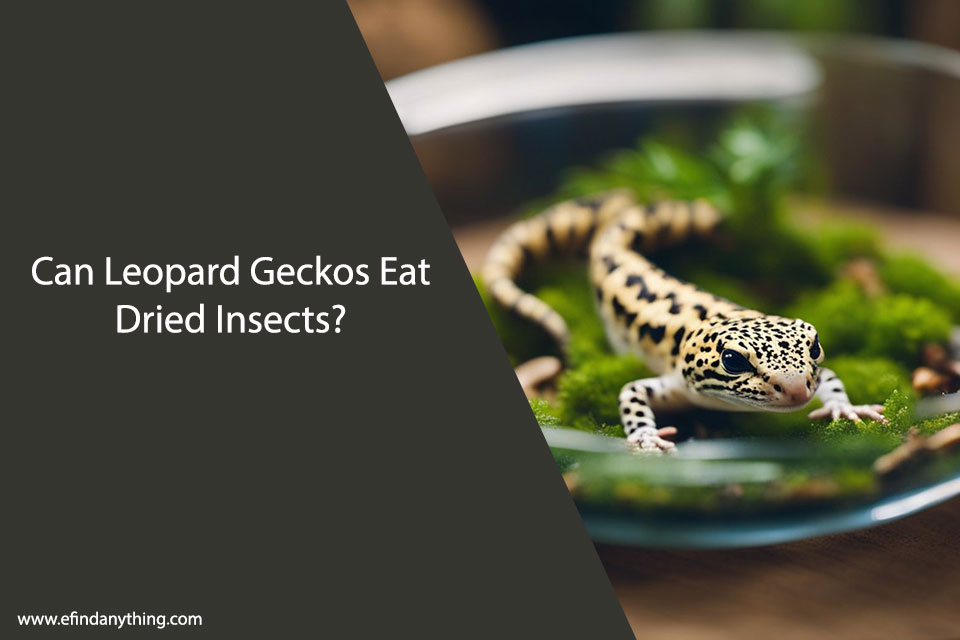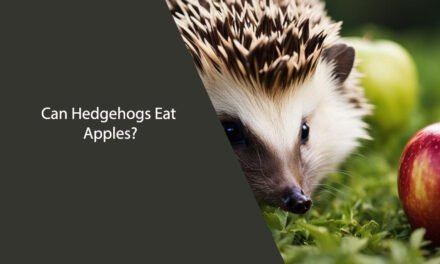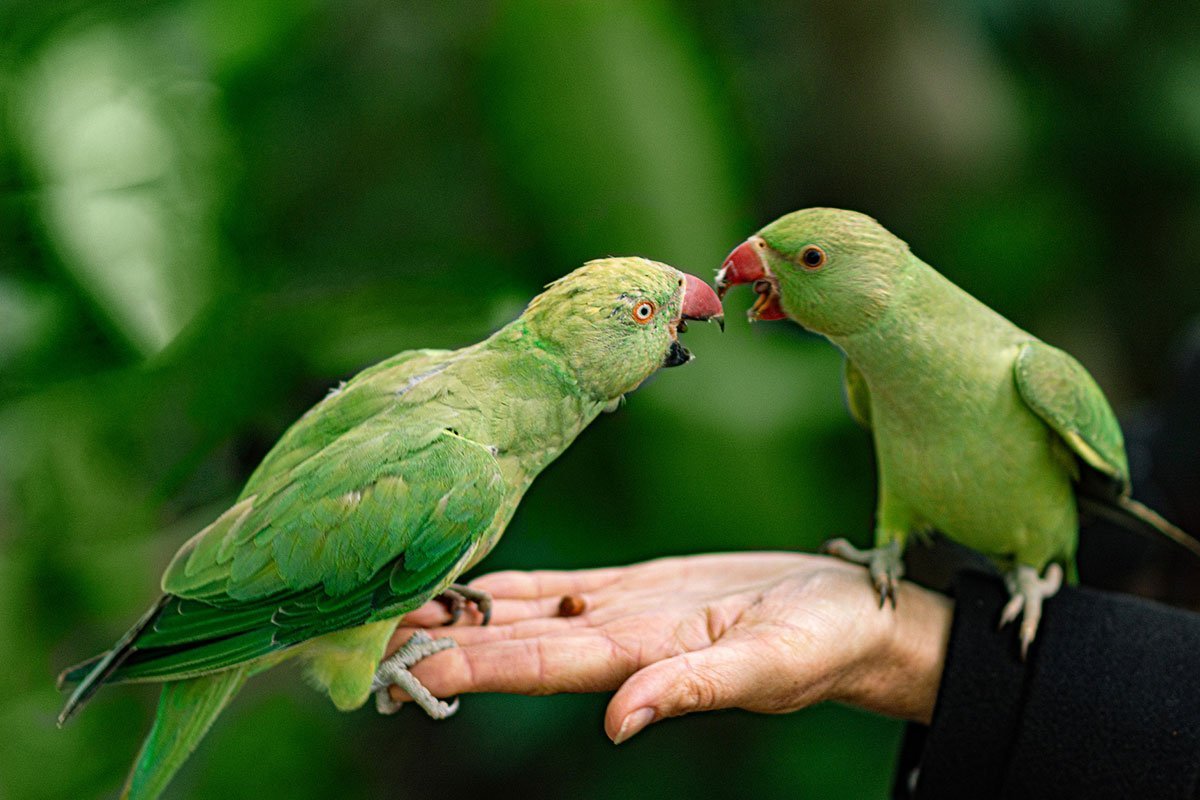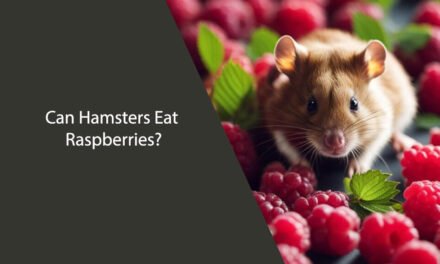Leopard geckos are fascinating creatures that make great pets. As a responsible pet owner, it’s important to ensure that your gecko is getting the right nutrition. One question that often comes up is whether or not leopard geckos can eat dried insects.

Dried insects are a popular choice for many reptile owners as they are easy to store and have a longer shelf life than live insects. However, when it comes to feeding leopard geckos, it’s important to consider the nutritional value of the insects. While dried insects may be convenient, they may not provide the same level of nutrition as live insects.
In this article, we will explore the topic of whether or not leopard geckos can eat dried insects. We will examine the nutritional value of dried insects, the potential risks and benefits, and provide some tips on how to ensure your gecko is getting the right nutrition.
Table of Contents
Leopard Gecko Dietary Basics

As responsible pet owners, we must ensure that our leopard geckos receive a balanced and nutritious diet. In this section, we will cover the nutritional requirements of leopard geckos and the benefits of feeding live versus dried insects.
Nutritional Requirements
Leopard geckos are insectivorous, which means their diet consists mainly of insects. They require a diet that is high in protein and low in fat. In addition to protein, they also need vitamins and minerals to maintain a healthy body.
It is important to vary the diet of leopard geckos to ensure they receive all the necessary nutrients. A diet consisting solely of one type of insect can lead to nutritional deficiencies. Therefore, we recommend feeding a variety of insects such as crickets, mealworms, superworms, and dubia roaches.
Benefits of Live vs Dried Insects
Live insects provide more nutritional value than dried insects. Live insects are a natural source of moisture, which is essential for leopard geckos to maintain hydration. Additionally, live insects are more active, which can stimulate the natural hunting behavior of leopard geckos.
Dried insects can be a convenient option for pet owners, as they have a longer shelf life and can be stored easily. However, it is important to note that dried insects have lower nutritional value than live insects. Therefore, we recommend using dried insects as a supplement to a varied diet of live insects.
In conclusion, a balanced and varied diet consisting of live insects is essential for the health and well-being of leopard geckos. While dried insects can be a convenient option, they should not be the sole source of nutrition for leopard geckos.
Safety Concerns with Dried Insects

When it comes to feeding leopard geckos, dried insects are a popular choice among pet owners. However, there are some safety concerns that need to be considered before feeding your gecko dried insects.
Hydration Issues
Dried insects have a very low moisture content, which can lead to dehydration in leopard geckos if they are fed exclusively on dried insects. This can cause health problems such as kidney failure and impaction. It is important to provide fresh water at all times and to offer a variety of food options to ensure your gecko is getting enough moisture.
Choking Hazards
Dried insects can also pose a choking hazard to leopard geckos. The hard exoskeleton of some insects, such as mealworms, can become stuck in the gecko’s throat, leading to choking or even death. To prevent this, it is important to properly gut-load and dust the insects before feeding them to your gecko. This will soften the exoskeleton and make it easier for your gecko to digest.
Nutritional Deficiencies
While dried insects can be a convenient and affordable food option, they may not provide all the necessary nutrients that your leopard gecko needs. Dried insects are often lacking in vitamins and minerals that are essential for your gecko’s health. It is important to supplement your gecko’s diet with calcium and vitamin D3 to prevent metabolic bone disease.
In conclusion, while dried insects can be a part of a healthy diet for your leopard gecko, it is important to be aware of the potential safety concerns. By providing fresh water, properly gut-loading and dusting the insects, and supplementing your gecko’s diet with essential nutrients, you can ensure that your gecko stays healthy and happy.
Proper Feeding Techniques

Hydration and Moisture Content
When feeding dried insects to leopard geckos, it is important to ensure that they are getting enough hydration. Dried insects have a lower moisture content than live insects, which can lead to dehydration if not supplemented properly. To help combat this, we recommend offering a shallow dish of water in the enclosure at all times. Additionally, misting the enclosure lightly with water can help increase the humidity and provide some moisture to the gecko.
Supplementing Dried Insects
While dried insects can be a convenient option for feeding leopard geckos, it is important to ensure that they are receiving a balanced diet. We recommend supplementing dried insects with a calcium and vitamin D3 supplement. This can be done by dusting the insects with the supplement powder before feeding. It is also important to vary the types of insects being fed to provide a diverse diet.
Feeding Schedule
Leopard geckos should be fed every 2-3 days, with juveniles requiring more frequent feedings than adults. When feeding dried insects, it is important to monitor the gecko’s weight and adjust the feeding schedule accordingly. Overfeeding can lead to obesity and health problems, while underfeeding can lead to malnourishment. We recommend keeping track of feeding schedules and weights to ensure that the gecko is receiving the appropriate amount of food.
Types of Dried Insects
When it comes to feeding leopard geckos, dried insects are a popular choice for many owners. They are easy to store, have a long shelf life and can be a convenient option for those who don’t want to deal with live insects. Here are some of the most commonly available types of dried insects.
Mealworms
Mealworms are a popular choice for feeding leopard geckos, both live and dried. They are high in protein and fat, making them a nutritious option. However, they are also high in chitin, which can be difficult for leopard geckos to digest in large quantities. It’s important to offer mealworms in moderation and to ensure they are properly gut-loaded before feeding them to your gecko.
Crickets
Crickets are another popular choice for feeding leopard geckos, and like mealworms, they can be offered both live and dried. They are a good source of protein and are generally well-tolerated by leopard geckos. However, they can be noisy, smelly and difficult to keep alive for long periods of time. Dried crickets can be a convenient option for owners who don’t want to deal with live insects.
Black Soldier Fly Larvae
Black soldier fly larvae, also known as phoenix worms or calciworms, are a relatively new addition to the market of dried insects. They are high in calcium and other essential nutrients, making them a popular choice for feeding leopard geckos. They are also low in fat and chitin, which makes them easy to digest. However, they can be more expensive than other types of dried insects and may not be as widely available.
Overall, there are many types of dried insects available for feeding leopard geckos. It’s important to offer a variety of insects to ensure your gecko is getting a balanced diet, and to always ensure that the insects are properly gut-loaded and dusted with calcium and other essential supplements.
Preparing Dried Insects for Feeding
When it comes to feeding leopard geckos, dried insects are a popular choice for many reptile owners. However, it is important to properly prepare these insects before feeding them to your gecko. In this section, we will discuss the best methods for rehydrating dried insects and the importance of gut-loading prior to feeding.
Rehydration Methods
Dried insects can be purchased at most pet stores and online retailers. Before feeding them to your gecko, it is important to rehydrate them to ensure they are easier to digest. There are several methods for rehydrating dried insects, including:
- Soaking: Place the dried insects in a small dish and cover them with water. Let them soak for 10-15 minutes, then drain the excess water before feeding them to your gecko.
- Mist with Water: Place the dried insects in a plastic bag and mist them with water. Seal the bag and let them sit for 10-15 minutes before feeding them to your gecko.
- Use a Reptile-Safe Moistener: There are several reptile-safe moisteners available on the market that can be used to rehydrate dried insects. Follow the instructions on the packaging for best results.
Regardless of the method you choose, it is important to make sure the insects are fully rehydrated before feeding them to your gecko.
Gut-Loading Prior to Feeding
In addition to rehydration, it is important to gut-load your dried insects prior to feeding them to your gecko. Gut-loading is the process of feeding the insects a nutritious diet so that they, in turn, provide your gecko with the necessary nutrients.
To gut-load your dried insects, feed them a diet of fresh fruits and vegetables for at least 24 hours prior to feeding them to your gecko. You can also purchase gut-loading formulas specifically designed for insects.
By properly rehydrating and gut-loading your dried insects, you can ensure that your leopard gecko is receiving a well-balanced diet that meets all of their nutritional needs.
Monitoring Your Leopard Gecko’s Health
As responsible pet owners, we need to keep a close eye on our leopard gecko’s health. Here are some tips to help you monitor your pet’s well-being.
Weight Tracking
It’s important to keep track of your leopard gecko’s weight to ensure they are maintaining a healthy size. We recommend weighing your gecko regularly and keeping a record of their weight. If you notice a significant drop in weight, it could be a sign of illness or stress.
Stool Examination
Checking your leopard gecko’s stool is another way to monitor their health. A healthy stool should be firm and well-formed. If you notice any changes in color, consistency, or frequency, it could indicate an underlying health issue.
Appetite Changes
Leopard geckos are known for their hearty appetite, so any changes in their eating habits should be monitored closely. If your gecko suddenly stops eating or shows a lack of interest in food, it could be a sign of illness or stress.
Remember, keeping a close eye on your leopard gecko’s health is crucial to their overall well-being. If you have any concerns, don’t hesitate to reach out to a veterinarian who specializes in reptiles.
Frequently Asked Questions
Is it safe for leopard geckos to consume freeze-dried insects?
Yes, it is safe for leopard geckos to consume freeze-dried insects. However, it is important to note that freeze-dried insects do not contain as much moisture as live insects, so it is essential to ensure that your leopard gecko is well hydrated.
What alternative food sources are suitable for leopard geckos?
Leopard geckos are insectivores, and their diet should consist primarily of insects. Some suitable options for leopard geckos include crickets, mealworms, and waxworms. It is important to ensure that any insects fed to your leopard gecko are appropriately sized and not too large for them to consume.
Are there any insects that leopard geckos should avoid?
Yes, there are some insects that leopard geckos should avoid. Fireflies, for example, are toxic to leopard geckos and should never be fed to them. Additionally, wild-caught insects should be avoided, as they may have been exposed to pesticides or other harmful substances.
Can leopard geckos have a varied diet including fruits or vegetables?
Leopard geckos are strictly insectivores and do not require fruits or vegetables in their diet. In fact, feeding them fruits or vegetables can lead to health problems such as obesity and digestive issues.
What are the nutritional implications of feeding leopard geckos dried mealworms?
Dried mealworms are a popular food option for leopard geckos, but they should not be the sole component of their diet. Dried mealworms are high in fat and lack some of the essential nutrients that live insects provide. It is important to supplement your leopard gecko’s diet with a variety of live insects to ensure that they receive all of the necessary nutrients.
How can I supplement my leopard gecko’s diet if live insects are not available?
If live insects are not available, there are several options for supplementing your leopard gecko’s diet. Commercially available insect powders and gut-loaded insects can provide some of the necessary nutrients. It is important to note, however, that these options should not be the sole component of your leopard gecko’s diet and should be used in conjunction with live insects whenever possible.





